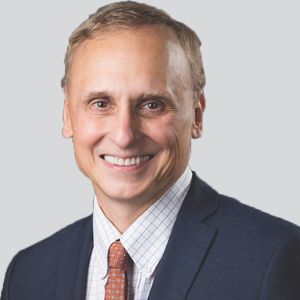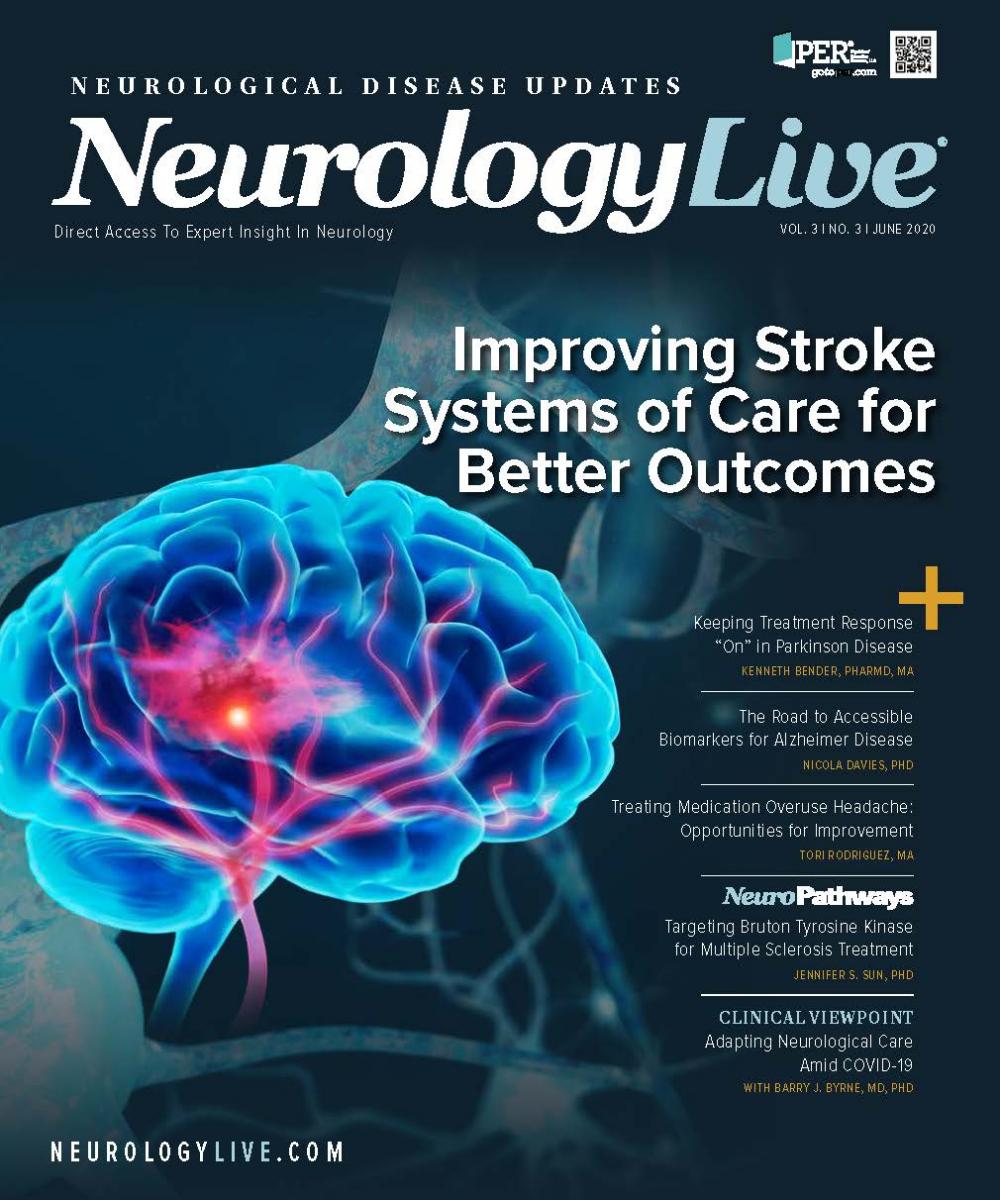Publication
Article
NeurologyLive
Adapting Neurological Care Amid COVID-19
Author(s):
In the wake of the COVID-19 pandemic, health care providers and patients have had to quickly adapt to new formats of care models to promote safety while retaining care standards.

Barry J. Byrne, MD, PhD
As the ongoing battle against the spread of the coronavirus disease 2019 (COVID-19) continues, the medical community is learning more about the disease and at-risk populations by the day. Many symptoms and comorbidities associated with neurologic disorders place patients, especially those in the neuromuscular disease community, within those high-risk categories established by the Centers for Disease Control and Prevention (CDC).
To learn more about what health care providers for patients with conditions like spinal muscular atrophy, Duchenne muscular dystrophy, and amyotrophic lateral sclerosis, among others, are doing in response to COVID-19, NeurologyLive® connected with Barry J. Byrne, MD, PhD, chief medical adviser to the Muscular Dystrophy Association (MDA) and associate chair of pediatrics and director at the University of Florida’s Powell Center for Rare Disease Research and Therapy in Gainesville. Byrne discussed the MDA’s resource center, advice that has been shared with patients and care centers, and those in this community who are at particular risk.
NeurologyLive: What are some of the best practices and precautions that the MDA has recommended for patients and providers?
Barry Byrne, MD, PhD: One of the more challenging aspects is that it’s not only [visibly] ill contacts that we advised against people interacting with, but it’s possible—particularly in the younger population—[for individuals to be] asymptomatic carriers. Really, the same precautions that are recommended for everyone are especially important for the neuromuscular community; caregivers and the patients themselves have to really practice very thorough handwashing procedures, [for instance], and [should] wear some kind of protective mask.
MDA developed a resource page and sent out a written document to all the care center directors and to the patient community with useful tips and a number of links that relied on CDC guidance information. Some aspects are particularly important to emphasize for the neuromuscular community: For instance, [the virus can be transmitted] not only in a respiratory [manner] when people are in the later stages of the disease, but you can have transmission through stool as well. Therefore, it’s very important to practice appropriate handwashing and disposal of those materials. We sent this out to everyone, but in real time we are learning more every day, so that information is being aggregated in the COVID-19 resource page that the MDA initiated [and updates].
How has the pandemic affected your ability to treat patients and manage their conditions?
In terms of general management of patients, we’ve had to make way for those coming into the hospital who experience respiratory difficulty. That means getting all of those other patients who are receiving regular care out of the hospital and back home. Sometimes they’re not entirely prepared to transition back to the home, but we’ve made that happen over the course of about a week.
It has been challenging to understand [what to do] when there’s some credible exposure and how to isolate 1 individual. That’s obviously been discussed. It’s very relevant to health care workers: Should anyone with a remote exposure but no confirmed direct exposure be out of the work schedule? That limits availability of care providers. That will be relevant in the home, too, for people with home nursing: Could that provider have encountered someone, or someone in their family, who might have had an exposure? Testing is really paramount to understanding whether exposure is real and whether someone should, in fact, be isolated.
The unavailability of DNA-based testing and/or the lengthy turnaround time has made that not the most practical solution.
Point-of-care tests detect exposure through the immune response; another test—an antigen test done at the bedside—looks at protein components of the virus, so that’s going to be very useful. You’ll see these serological tests or antibody tests becoming more prevalent because they are a lot faster to turn around than the DNA-based testing for the virus itself.
Have you used telemedicine to connect with your patients?
Absolutely. Without the ability to quickly pivot into a virtual format, I think a lot of patients would have been left without access to their care providers. It’s been important to have some relaxation of the regulatory guidelines and restrictions around that ability to visit remotely with patients who are even not within the state, who are across state boundaries or elsewhere in the country. Proper documentation and billing practices have been established to make sure these visits are properly tracked in the medical record. Having the ability to have an electronic medical record that integrates with the Zoom platform (which is secure for patient-protected health information) has been critical.
We have put these remote video platforms into place, as well, because of the impact on our science. Rather than face-to-face meetings, we’ve used this kind of platform to establish a basis for continuing collaborations and even for broadening our collaborative opportunities for people working on innovative approaches to solving this problem. For instance, we had a meeting in March among a half-dozen folks prepared to roll out some of this anti- body testing onsite with the rapid turnaround testing platform that we developed.
Virtual visits were not implemented in many places prior to this health crisis, but because of the network that was established by the MDA, we’re really leveraging the best-practices experiences that individual sites have had, to enable others to learn from them. We also expanded the MDA resource center, which has allowed care center specialists across the country to call the resource center and get access to the latest information.
Do you foresee retaining any of these telemedicine practices post pandemic?
I do. I think it will benefit our neuromuscular community because obviously many patients with mobility issues find it very challenging to travel to the site to be seen. We will have to implement some aspects of direct data collection that aren’t readily available by a telemedicine format. For example, especially now in the wake of these respiratory illnesses, we don’t have a ready means for doing [remote] pulmonary function testing nor do we have the best means for [remote] physical function assessment or clinical evaluations. We’re going to have to work out how those things are done in the home with remote tracking of activity. Activity monitors are useful as surro- gates for mobility testing, and there are Bluetooth accessories for pulmonary function testing as well as spirometers; these would have to be distributed to patients to use in conjunction with their [smartphones or other] personal devices.
For a while, there have been means to do home nursing—used more often in the research arena than in the clinical arena—but laboratory assessment can certainly be done through home nursing visits. The rest of the assessment can be adjusted to work on the telemedicine format, and then we can make sure that people have the needed health maintenance that’s required over time.
I don’t think this will completely replace face-to-face visits; it just will lessen their frequency. Probably, in fact, in many cases, this will improve access to care for some families who either can't be transported to an office or hospital or can’t coordinate visits with multiple providers at once. At the University of Florida, we’re setting up a virtual meeting room, so the patient actually stays in 1 place, and the multiple providers who are part of the multidisciplinary team have appointments. It forces everyone to be exactly on time because the next person comes in whether you’re finished or not. I think it also makes it much more convenient and comprehensive for patients.
Any thoughts on the future and returning to “normal”?
Of course there will be benefits to getting back to normal, for people traveling to be together and to share those common experiences that help us advance the field. It’s particularly important in the research realm. Obviously, this is an unprecedented time in history and certainly in medical care. It’s a [time of] high risk for the neuro- muscular community—possibly more than any other community of people—but the neuromuscular patient community has understood the gravity of the situation and the need to take it quite seriously so far, thank goodness. We feel that people have been safe in following those guidelines about handwashing and protecting themselves with the necessary protective equipment if needed, and we hope that everyone stays healthy and well throughout the course of this. I will say that we should not let our guard down, though, because although there is this attempt to lessen the rate of new-case acquisition and to come up with new strategies for treating those who are hospitalized, if relaxation of the guidelines against public gatherings comes too early, then there will be a resurgence of the infection for those who haven’t been exposed. We have to be vigilant about that and really think hard about who are the most vulnerable subjects, in both health care providers and our neuromuscular community, who’d be eligible for a vaccine as soon as it’s available because that’s really, honestly, going to be the only way to have a lasting impact in lessening the severity of this illness.





